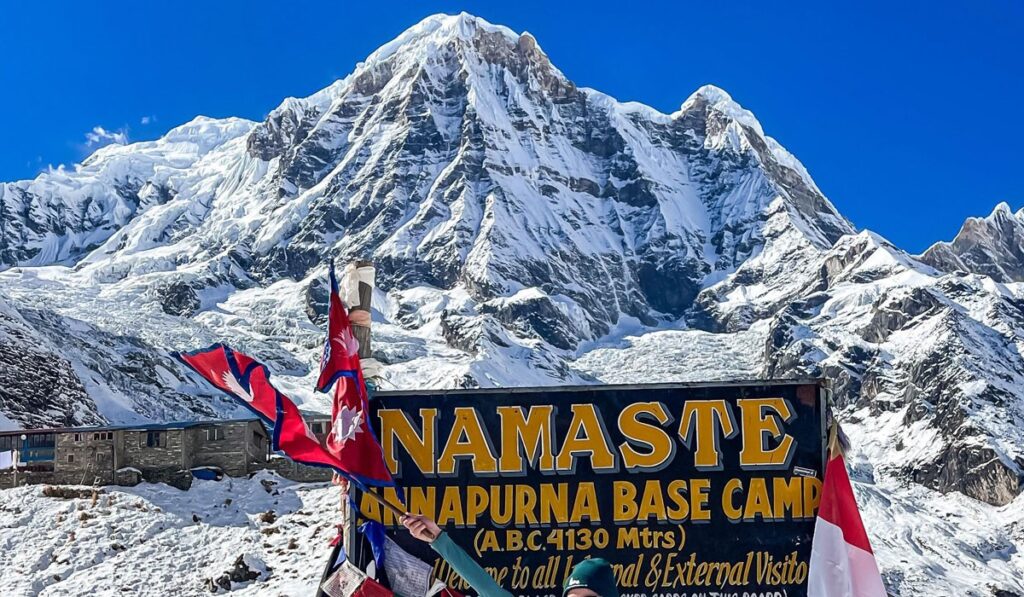
Annapurna Base Camp Permit, Costs & Details

To trek to Annapurna Base Camp (ABC) in Nepal, you also need to obtain certain permits and be aware of associated costs. Here are the permit details, costs, and other essential information for trekking to Annapurna Base Camp:
Permits:
a. TIMS Card (Trekkers’ Information Management System): The TIMS card is required for all trekkers in the Annapurna region, including Annapurna Base Camp. It also helps in tracking trekkers for safety and security purposes.
b. Annapurna Conservation Area Permit (ACAP): The ACAP permit is also mandatory for trekking in the Annapurna Conservation Area, which includes the Annapurna Base Camp trekking route. It helps in the conservation and management of the natural resources in the area.
Costs:
a. TIMS Card: The cost of the TIMS card varies depending on whether you’re trekking with a registered trekking agency or independently. As of my last update, the cost for individual trekkers is approximately NPR 2,000 (about $20 USD), while the cost for organized groups is NPR 1,000 (about $10 USD) per person.
b. ACAP Permit: The cost of the Annapurna Conservation Area Permit also varies for foreigners and SAARC (South Asian Association for Regional Cooperation) nationals. For foreigners, the permit costs approximately NPR 3,000 (about $30 USD) per person, while for SAARC nationals, it costs NPR 1,000 (about $10 USD) per person.
Where to Obtain Permits:
- TIMS Card: You can obtain the TIMS card from the Nepal Tourism Board office in Kathmandu or Pokhara. You’ll need to fill out an application form, provide a copy of your passport, and pay the required fee.
- ACAP Permit: You can obtain the ACAP permit from the entrance gates of the Annapurna Conservation Area in places like Besisahar, Pokhara, or Nayapul (depending on your trekking route). You’ll need to fill out an application form, provide a copy of your passport, and pay the required permit fee.
Additional Details:
- Make sure to carry your permits with you during the trek, as they may be checked at various checkpoints along the route.
- It’s essential to abide by the rules and regulations set by the conservation authorities to ensure the protection of the environment and the well-being of local communities.
- Consider hiring a licensed guide and/or porter to enhance your trekking experience and support the local economy.
By obtaining the necessary permits and being aware of associated costs and details, you can embark on the Annapurna Base Camp trek prepared and ready to enjoy the breathtaking landscapes and cultural experiences along the way.
